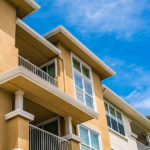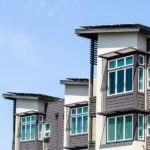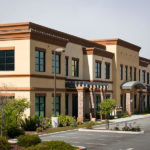The Termite Life Cycle
MightyMite Termite’s Guide to the Termite Life Cycle
MightyMite Termite’s extensive understanding of the termite life cycle and how termites behave allows our team of specialists to provide a complete range of the most effective professional termite control solutions for homeowners in the Bay Area, CA. A termite’s lifespan can vary widely, depending on the species and its role within the colony. Termites begin their lives as eggs, like most insects, and undergo a series of steps in a certain development process called incomplete metamorphosis. A termite will progress through three main stages in its life – from egg to nymph to adult – but incomplete metamorphosis means it can molt, or transform, several times in its lifespan, adapting to perform a specific function needed within the colony. Like many insects, termite colonies follow a social structure organized into a caste system.
The Hierarchy of Termite Colonies
This hierarchal caste system of a termite colony consists of three main castes – workers, soldiers, and reproductive termites. Each colony will also have a king and queen, who are at the center of responsibility for reproduction. A queen termite will lay eggs every day, sometimes producing up to 30,000 eggs per day. These eggs will hatch into larvae. Larvae undergo many exoskeletal molts as young termites, often referred to as nymphs, and eventually develop into workers, soldiers, or reproductive termites based on the needs of the colony.
- Worker Termites – Workers make up most of the colony’s population and are often the busiest of all castes. These soft-bodied termites are responsible for finding and storing food, caring for eggs and nymphs, and maintaining the nest’s structures. Homeowners are most likely to encounter worker termites when infested wood is disturbed.
- Soldier Termites – The soldier’s sole purpose is to guard and protect the colony. Soldier termites are typically born with large mandibles rendering them incapable of feeding themselves and needing to rely on the workers for their food.
- Reproductive Termites – Once a reproductive termite matures, it develops wings. Mature reproductive termites, also called alates, consist of both fertile males and females and become darker and harder than other termites so they can withstand conditions beyond their nest. Once a colony reaches a certain capacity and the specific weather or moisture levels are reached outside of the colony, alates venture out to swarm, a necessary occurrence for the survival and expansion of termite colonies. For homeowners, a termite swarm is a visible indicator of a nearby termite colony.
- King Termites – The king is the second most important member of the termite caste system because it is needed to establish a new colony. After reproducing with the queen, its continued presence helps the colony thrive, but it is still unknown exactly what the king’s role is after reproduction.
- Queen Termites – The primary function of the queen is reproduction. A queen begins life as an alate, and once it’s paired with a male king, it seeks and excavates a suitable site to procreate and establish a new colony. Queens produce eggs every day and never leave the nest. The queen also has control over the development of other queens within the colony through the use of pheromones. If a queen is never disturbed or exterminated, it can typically live up to an average of 15 years.
Swarming – The Starting Stage of Termite Reproduction
In order to maintain their survival, termites must venture beyond their original nests to spread and establish new colonies. This is a necessary step in the termite life cycle because this is where reproduction begins. Reproductive termites often referred to as alates, leave the colony to produce a process called swarming. Swarming is when fertile male and female alates swarm together and pair up for mating. When a king finds its queen, they shed their wings and find a suitable habitat to start a new colony, spending the rest of their lives procreating to expand the nest. Although all swarms often occur the day following a rain shower, the size, timing, and chances of spotting a termite swarm depend on the species, weather, and time of year.
- Subterranean termite swarms are typically the largest populated of swarms and are much more common, usually occurring around the beginning of spring when the weather gets warm and humid. Homeowners are most likely to spot a Subterranean termite smarming because of their frequency and larger size.
- Drywood termites wait to produce swarms until late in the summer or early fall. Since a Drywood termite swarming is significantly smaller in size compared to Subterranean termite swarms, it’s less likely to notice one as it’s occurring. The best warning sign a Drywood termite swarm has occurred is indicated by discarded wings near gaps in door frames, windowsills, and siding, as well as vulnerable spots under eaves and wood roofing shingles.
- Dampwood termites swarm during the summer months, typically during humid evenings. Unless there is a significant level of humidity and moisture from a leak or excess water damage, it’s less likely they’ll seek to form a nest inside homes. Since they dwell in wood structures, they’ll target wood with high moisture content around homes like old trees, stumps, logs, utility poles, fence posts, and firewood.
Encountering Termites and Termite Damage In Your Home
If you happen to encounter termites within your home, they most likely belong to the colony’s group of worker termites, but there’s also a likely chance you can encounter termite swarmers. Swarmers will be spotted either while a swarm is occurring or from finding their bodies or discarded wings near doors, windowsills, and sources of light. When you find wood damage on your property, you’ve found the damage inflicted by worker termites. Two species of termites that are the most likely to invade homes are Subterranean and Drywood termites. It is also possible for Dampwood termites to infest homes but less likely unless the wood they occupy is in consistent contact with moisture and in a significant stage of rotting.
- Subterranean termite damage can occur in homes’ interior or exterior locations and starts at ground level, affecting structural integrity around the foundation. They’ll cause damage in crawlspaces and basements by building mud tunnels and can work their way up to corrupting floorboards, walls, ceilings, siding, and trim, causing damage that would appear similar to slight water damage.
- Drywood termite damage affects dry, sound wood that can be found in the roof sheathing, rafters, joists, trim, siding, wood steps, porches, decks, floors, walls, door, and window frames, wooden furniture, and interior wood trim.
- Dampwood termites are attracted to wood with high moisture content. They tend to target stumps, logs, lumber, and branches, especially if the material is decaying, but they can be attracted to outdoor wooden structures or exposed wood in constant contact with moisture from plumbing issues, roof, and siding leaks, and rainwater damage.
You may be able to identify the termite species that has infested your home based upon the damage they have caused, but it’s vital to contact the termite experts at MightyMite Termite to get an accurate diagnosis and effective treatment plan.
The Bay Area’s Trusted Termite Control Experts
Since 2012, MightyMite Termite has provided Bay Area homeowners with highly experienced termite control solutions. Our expert knowledge of termites’ life cycles and behaviors allows us to apply state-of-the-art, environmentally responsible techniques and effective treatment plans customized to every situation. With free inspections, proven strategies, competitive pricing, and a 100% guarantee of our work up to two years following any of our services, you’ll have a trusted partner committed to eliminating and safeguarding your home against termites. For more information on termite infestations, contact our professional termite services at MightyMite Termite today!







